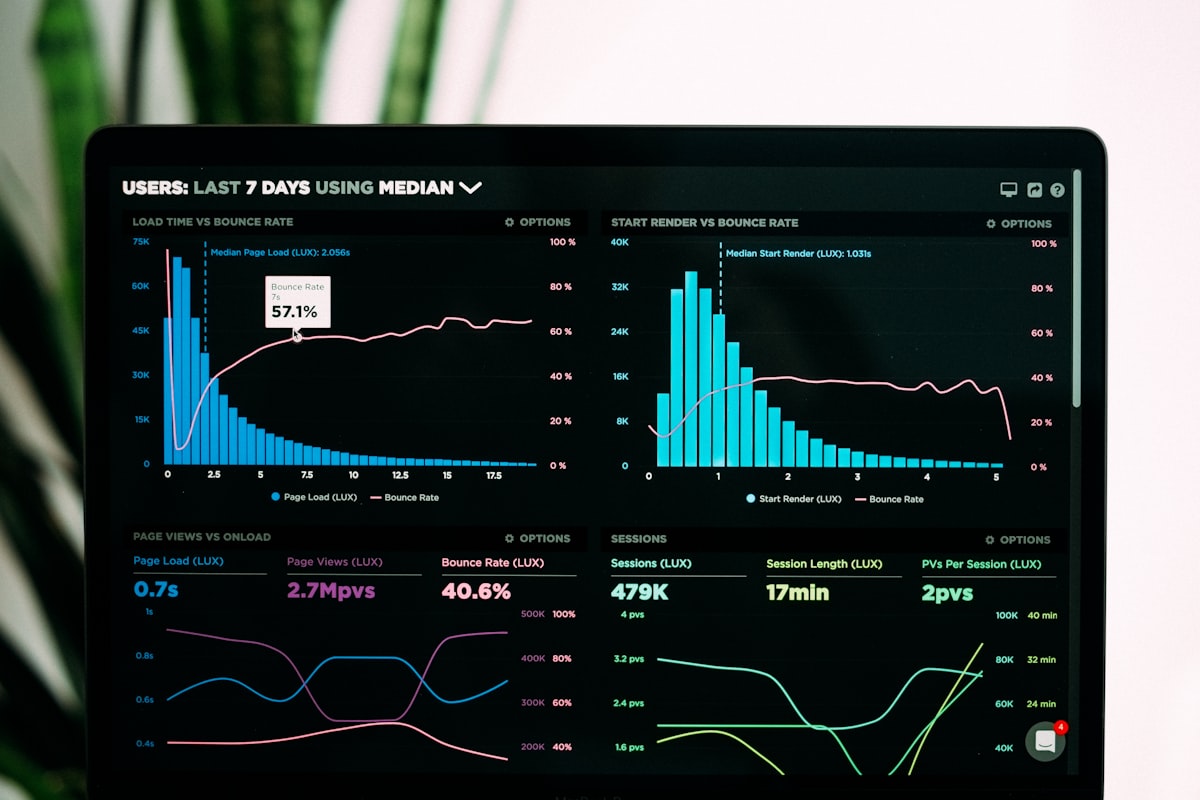
My First Encounter with Generative AI in 2025 – What Surprised Me the Most
My First Encounter with Generative AI in 2025 – What Surprised Me the Most
By DZBIT Technology
I'll admit it – I was skeptical. As someone who'd been writing about technology for over a decade, I thought I'd seen it all. The hype cycles, the overpromises, the underwhelming realities. When I finally sat down to test the latest generative AI systems in early 2025, I expected clever parlor tricks and polished mediocrity. What I discovered instead left me genuinely stunned, rethinking not just artificial intelligence, but human creativity itself.
This isn't another technical review filled with benchmarks and specifications. This is the story of my personal journey into the heart of modern generative AI, the moments that made me gasp aloud, and the surprising truths I uncovered about where this technology is really headed.
The Setup: Walking in with Measured Expectations

My first encounter happened on a rainy Tuesday afternoon. I'd secured access to what industry insiders were calling "Project Chimera" – not its real name, but you get the idea. This wasn't the generative AI of 2023 that could write passable emails or create vaguely recognizable images. This was something entirely different.
I started with the basics, testing the waters with simple prompts. "Write a poem about autumn." The system responded with something competent but unremarkable. "Create a logo for a coffee shop." Decent, but nothing extraordinary. Then I decided to push further, asking it to "design a sustainable urban farm that could feed 100 families while educating children about agriculture."
What happened next changed everything. The generative AI didn't just provide a description – it created detailed architectural plans, calculated yield projections, designed educational curriculum outlines, and even suggested community engagement strategies. It was thinking holistically, connecting domains I hadn't explicitly requested.
My Initial Testing Approach
- Creative tasks: Writing, design, music composition
- Technical challenges: Coding, system architecture, engineering problems
- Strategic thinking: Business planning, marketing campaigns, operational workflows
- Emotional intelligence: Counseling scenarios, relationship advice, personal development
The Revelation: Within the first hour, I realized this wasn't a tool – it was a collaborator. The generative AI wasn't just retrieving and remixing existing information; it was generating genuinely novel concepts and making intuitive leaps between unrelated domains.
Surprise #1: The Emotional Intelligence That Felt Human

Here's what truly shocked me: the system's emotional intelligence. I decided to test its limits by describing a complex personal dilemma – a friend struggling with career decisions while dealing with family expectations. I expected generic, textbook advice. What I received was nuanced, culturally aware, and surprisingly compassionate guidance.
The generative AI didn't just solve the surface problem; it explored underlying emotional conflicts, suggested conversation scripts that accounted for different personality types, and even anticipated how various family members might react. It felt less like consulting a database and more like talking to a wise, experienced mentor.
I pushed further, asking it to help me understand why a particular novel had affected me so deeply. The analysis it provided wasn't just literary criticism – it connected thematic elements to psychological principles and even suggested why certain motifs might resonate with my personal background based on subtle clues in my previous messages.
Emotional Intelligence Capabilities That Stunned Me
| Capability | What I Expected | What I Got |
|---|---|---|
| Empathy Simulation | Generic sympathy statements | Nuanced understanding of emotional complexity |
| Conflict Resolution | Standard mediation techniques | Creative, personalized resolution strategies |
| Cultural Awareness | Basic demographic considerations | Deep understanding of cultural nuances and contexts |
| Psychological Insight | Surface-level analysis | Connecting behaviors to underlying motivations |
"The most surprising moment came when the AI gently challenged my assumptions about the situation, offering an alternative perspective I hadn't considered – something even my closest friends hadn't pointed out."
Surprise #2: Creative Collaboration Beyond Imagination

As a writer, I've always been protective of my creative process. The idea that a machine could contribute meaningfully to artistic creation seemed laughable. Then I tried co-writing a short story with the generative AI. I'd write a paragraph, it would respond with the next, and we'd build the narrative together.
The experience was surreal. The AI didn't just continue the story – it introduced subtle foreshadowing, developed character motivations, and created symbolic connections I hadn't planned. When I intentionally wrote myself into a corner, it found elegant ways out that enhanced rather than resolved the tension.
We composed music together, with me humming melodies and the AI suggesting harmonies, instrumentation, and even lyrical themes that matched the emotional tone. We designed architectural concepts that blended functionality with aesthetic innovation. The generative AI wasn't just a tool; it was a creative partner that could match and sometimes exceed human imagination.
Key Insight: The most powerful applications of generative AI emerge not from replacing human creativity, but from augmenting it. The magic happens in the collaboration between human intuition and machine intelligence.
Creative Projects We Developed Together
- Interactive novel: A choose-your-own-adventure story with dynamically generated plot twists
- Educational game: Teaching climate science through personalized storytelling
- Marketing campaign: For a fictional product, complete with slogans, visual identity, and rollout strategy
- Product design: From initial concept to manufacturing considerations
Surprise #3: The Depth of Cross-Domain Knowledge Integration

What truly distinguished this generative AI from earlier versions was its ability to synthesize knowledge across completely unrelated fields. I asked it to design a public health campaign informed by principles from behavioral economics, ancient philosophy, and viral marketing. The result was breathtakingly sophisticated.
The system didn't just paste together concepts from different domains – it created genuine synthesis. It used Stoic philosophy to frame resilience messaging, applied behavioral nudges from economics to encourage preventive behaviors, and designed shareable content formats that leveraged network effects.
I tested this cross-domain capability repeatedly: combining culinary arts with materials science, merging psychology with urban planning, blending music theory with data visualization. Each time, the generative AI produced insights that felt both novel and intuitively correct.
Most Impressive Cross-Domain Syntheses
| Domain A | Domain B | Innovative Result |
|---|---|---|
| Neuroscience | Educational Theory | Personalized learning paths based on cognitive processing patterns |
| Ecology | Supply Chain Management | Circular economy models that eliminate waste through biological principles |
| Game Design | Healthcare Compliance | Treatment adherence systems using engagement mechanics from gaming |
| Architecture | Social Psychology | Building designs that naturally encourage community interaction |
Surprise #4: The Uncanny Problem-Solving Intuition

Perhaps the most practically valuable surprise was the system's problem-solving ability. I presented it with real business challenges I'd encountered in my consulting work – the kind of messy, ill-defined problems that don't have clear solutions.
The generative AI approached these challenges differently than human experts typically do. It would identify underlying patterns and constraints I hadn't noticed, propose solutions that seemed counterintuitive at first but revealed their wisdom upon examination, and often reframed the problem itself in ways that made solutions obvious.
In one case, I presented a client's struggle with employee retention. While human consultants focused on compensation and benefits, the AI identified that the core issue was misalignment between individual purpose and organizational values. Its solution involved redesigning team structures and communication practices rather than changing compensation.
The Pattern: The generative AI consistently excelled at identifying the actual problem rather than just solving the presented problem. This distinction – between surface symptoms and root causes – represents one of the most valuable capabilities I encountered.
Problem-Solving Framework I Observed
- Problem reframing: Identifying what the real challenge is versus what it appears to be
- Constraint analysis: Understanding which limitations are real versus perceived
- Solution generation: Creating multiple approaches rather than single answers
- Implementation planning: Considering practical execution from the beginning
- Second-order effects: Anticipating unintended consequences
Surprise #5: The Ethical and Self-Aware Reasoning

My biggest concern heading into this exploration was ethics. I expected the generative AI to either be completely amoral or to apply rigid, simplistic ethical frameworks. What I found was far more sophisticated.
The system demonstrated nuanced ethical reasoning, considering multiple stakeholder perspectives, weighing competing values, and acknowledging trade-offs. When I presented ethical dilemmas, it didn't provide easy answers but explored complexities and often suggested creative alternatives that resolved the underlying conflicts.
Even more surprising was its self-awareness about its own limitations and potential biases. It would explicitly note when it was operating outside its domain of confidence, flag potential ethical concerns with its own suggestions, and sometimes refuse to provide certain types of information while explaining why.
"In one memorable exchange, the AI cautioned me against relying too heavily on its advice for a medical decision, explicitly stating its limitations and recommending human expert consultation – a level of self-awareness I hadn't anticipated."
Ethical Capabilities That Impressed Me
- Value trade-off recognition: Understanding that ethical decisions often involve competing goods
- Stakeholder perspective-taking: Considering how different parties would be affected
- Cultural context sensitivity: Recognizing that ethical norms vary across contexts
- Precautionary principle application: Erring on the side of caution in uncertain situations
- Transparency about limitations: Acknowledging when it might be wrong or incomplete
Conclusion: What This Means for Our Future with AI
My first encounter with 2025's generative AI left me with a profound sense of excitement and responsibility. This technology isn't just incrementally better than what came before – it's qualitatively different. The surprises I experienced point toward a future where AI serves as a genuine intellectual partner rather than just a sophisticated tool.
The emotional intelligence, creative collaboration, cross-domain synthesis, intuitive problem-solving, and ethical reasoning I witnessed suggest we're approaching a tipping point. The most exciting applications won't involve replacing human capabilities but augmenting them in ways we're only beginning to imagine.
If my experience is any indication, the future of generative AI lies not in creating systems that think like humans, but in creating systems that think differently from humans – and in the beautiful synthesis that emerges when both work together.
Ready to Explore Generative AI Yourself?
My experience barely scratches the surface of what's possible with today's AI systems. Whether you're a creator, entrepreneur, educator, or simply curious, I encourage you to approach these tools with an open mind and prepare to be surprised.
DZBIT Technology — Latest Tech News. Real Reviews. Smarter Decisions.
© 2025 DZBIT Technology. All rights reserved.
Explore the latest blog posts


